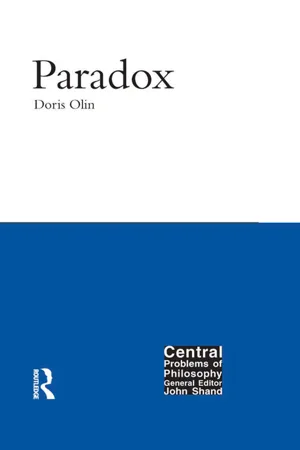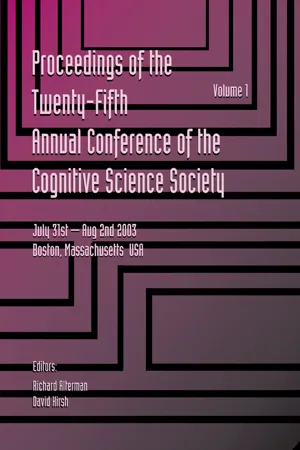Economics
Prisoner's Dilemma
The Prisoner's Dilemma is a concept in game theory where two rational individuals acting in their own self-interest make decisions that result in a suboptimal outcome for both. It illustrates the tension between individual and collective rationality, showing how cooperation can lead to better outcomes, but self-interest often prevails. This concept has applications in various fields, including economics, politics, and sociology.
Written by Perlego with AI-assistance
Related key terms
9 Key excerpts on "Prisoner's Dilemma"
- eBook - ePub
- Weiying Zhang(Author)
- 2017(Publication Date)
- Routledge(Publisher)
2The Prisoner’s Dilemma and the Nash equilibriumThe basic concepts of Game Theory include players, actions, information, strategies, payoffs, equilibriums, and outcomes. The goal of each player is to maximize his own payoffs (interests), but his payoffs are not determined by his own choices alone, but also depend on the choices of all other players. The optimal choices of all players constitute an equilibrium. The goal of game analysis is to predict players’ actions and the equilibrium outcome.Generally speaking, one person’s optimal strategy depends on which strategy he believes other players will choose. However, in a game such as the Prisoner’s Dilemma, the individual optimal choice does not depend on the choices of others. This type of optimal strategy is called the “dominant strategy”. If every player in the game has a dominant strategy, then the dominant strategy of every player constitutes a dominant strategy equilibrium. Under this condition, as long as each person is rational, then we know the game’s equilibrium outcome.In the Prisoner’s Dilemma game, “do not cooperate” is each person’s dominant strategy. The Prisoner’s Dilemma means individual rationality does not satisfy collective rationality. The reason for this is that individuals do not consider the externalities of their behaviors when making a decision. Negating individual rationality will not resolve the Prisoner’s Dilemma. Instead, alignment between individual rationality and collective rationality can be achieved through the design of various institutions and thus realizing social cooperation.If a game does not have a dominant strategy equilibrium, solely assuming that players are rational is insufficient to predict the actions of players. The way a rational player acts depends on whether or not he knows that other players are also rational. He might even want to know whether or not other players know he is also rational. Game Theory uses “common knowledge of rationality” to generalize this high-level rationality assumption. It is very difficult to satisfy complete common knowledge in reality, but it is a very useful assumption. - This is the prisoner’s dilemma in its simplest form. It is a type I paradox and, I would claim, is veridical. Since there is general (although not universal) agreement on this last point, the dilemma is properly classed as uncontroversial.The prisoner’s dilemma is a classic problem in game theory. Decision theory, discussed in Chapter 5 , deals with rational choice in situations in which the outcome of your choice depends on which of the possible states of affairs obtains. Game theory, however, is more narrowly construed: it deals with competitive decision situations, where the outcome of your choice is dependent on the decisions of another agent whose interests conflict with your own, and who may therefore take your decision strategy into account.Certain elements of game theory are of particular relevance for understanding the dilemma. In classical game theory, a game is defined in terms of its utility payoffs. Utility, or desirability, as we noted earlier, is a measure of preference: one outcome has a higher utility than another just in case the player prefers it to the other. Why the player prefers it is irrelevant. Our desires and goals are not subject to rational criticism, on this conception. It does not matter whether the agent is an egoist or altruist, philistine or aesthete, conservative or liberal: rationality is a matter of attempting to obtain maximal satisfaction of one’s preferences.One assumption of classical game theory, which is essential to certain versions of the paradox, is that the structure of the game is common knowledge between the players. This means more than just that both players know how the game works. Common knowledge, as here understood, is an iterative concept. P is common knowledge between A and B provided that both A and B know that P, A knows that B knows that P, B knows that A knows that P, A knows that B knows that A knows that P, and so on. Similarly, it is assumed that it is a matter of common knowledge that both players are perfectly rational.Now to return to the prisoner’s dilemma. Is the paradox of any practical significance? The classic formulation in terms of two prisoners facing sentence can create the appearance that the dilemma is too fantastic to have much practical relevance. But this is appearance only. In fact, the necessary ingredients for a version of the prisoner’s dilemma are minimal. Consider this matrix:
- eBook - ePub
- Russell Hardin(Author)
- 2015(Publication Date)
- RFF Press(Publisher)
strategic calculations and should not be expected to produce collectiely rational results; (2) the most telling critique of this analysis invokes strategic calculations, but these carry no behavioral weight.At the first level, without strategic calculations, Prisoner’s Dilemma is merely a veridical paradox. One might at first think that individuals acting rationally to maximize their well-being should collectively make themselves so well off that they would not miss any potential gains. This is a compelling assumption in market activity: if bargaining and communication are costless, trading for mutual benefit will lead to a Pareto-optimal state of affairs in which no further gains are possible. When, however, collective goods are added to private consumption goods, market behavior may no longer be collectively rational and may result in Pareto-suboptimal outcomes. If enforceable contracts are possible and costless, 2-person collective goods and those n -person collective goods that would not yield net benefits to n — 1 persons may be provided, but goods that are more interesting and more beneficial may not. Individual behavior in welfare economics is not very strategic.The source of paradox in the Voter’s Paradox is structural: it follows clearly from the preferences of the individuals. The source of the first sense of paradox in Prisoner’s Dilemma is similarly structural: it depends only on the individuals’ preferences over their own outcomes, and takes no account of their strategic interactions with their adversary-partners. It follows from the fact, discussed in chapter 2 , that each player has a clear preference for the outcomes from one strategy over those from the other strategy. This can be seen in matrix la in figure 9-1 , which dis-plays the semigame played by the Row player in the Prisoner’s Dilemma game of matrix 1 in the same figure. (These matrices basically duplicate those in figure 2-1 - eBook - ePub
- Martin Nowack, Roger Highfield(Authors)
- 2011(Publication Date)
- Canongate Books(Publisher)
Let’s spell this out. When the players both cooperate, the payoff (R) is greater than the punishment (P) if they both defect. But when one cooperates and one defects, the person who is tempted to renege gets the highest payoff (T) while the hapless cooperator ends up with the lowest of all, the sucker’s payoff (S). Overall, we can create the Dilemma if T is greater than R which is greater than P which is greater than S. We can rank the payoffs in the basic game in other, different ways and still end up with cooperative dilemmas. But of all of them, the Prisoner’s Dilemma is by far the hardest to solve. You can think of it as the ultimate dilemma of cooperation. We all encounter the Dilemma in one form or another all the time in everyday life. Do I want to help a competitor in the office—for instance, offer to do his work during his holiday—when this person is competing with me for a promotion? When two rival firms set prices, should they both go for as much as they can, colluding in some way, or should one company try to undercut its competitor? Arms races between superpowers, local rival nations, or even different species offer other examples of the Dilemma at work. Rival countries are better off when they cooperate to avoid an arms race. Yet the dominant strategy for each nation is to arm itself heavily. And so on and so forth. INCARCERATION On my first encounter with the Prisoner’s Dilemma in that Alpine hut, I was transfixed. By that time, Karl had actually become my prisoner. He didn’t have any transport and I offered him a ride back to Vienna. We discussed the Dilemma as we drove back the next day in the same VW that my father still uses today to putter around Austria. Even after I dropped Karl off, I kept him in my sights. Before long, I was doing a PhD with him at the Institute for Mathematics in Vienna - eBook - ePub
Strategy and Politics
An Introduction to Game Theory
- Emerson Niou, Peter C. Ordeshook(Authors)
- 2015(Publication Date)
- Routledge(Publisher)
Of course, the Prisoners’ Dilemma would be of little interest if its application were confined to prisoners. But, as we’ve already suggested in referring to the motives of political elites leading up to WWI, this game has had broad application and allows us to understand such things as the reason why people might agree to the establishment of a state that has the power to coerce them, why collectivities sometimes seem to act in ways that are irrational from the perspective of the individuals involved, why various industries might even lobby to be regulated by government, why governments regulate and license barbers and taxi cab drivers but do little in the way of regulating automobile safety aside from requiring the installation of seat belts, why our actions can depend critically on whether we anticipate interacting with the same person again in the future, why the simple basic act of voting in a democracy can be a difficult thing to explain, why labor unions and various associations often offer low cost life insurance to their members, why attempts at reforming the economy of one society prove to be a success whereas similar reforms applied elsewhere lead to massive inefficiency and corruption, and why nations sometimes war even when they might prefer other means of resolving disputes.The universality of Prisoners’ Dilemma-type situations is no better illustrated than the example from Chapter 1 of the school of herring that forms a swirling ball when approached by predators, only to offer those predators a ready and efficiently consumed target. The optimal strategy for the school, of course, is to scatter itself in every direction, thereby thinning out so a predator can, at best, consume a fraction of the species and perhaps even exhaust itself in the process. Each individual fish in the school has two choices: Swim away from the others or attempt to move to the center of the slowly shrinking ball so as to not be the first to be eaten and perhaps hope that predators will sate themselves before the ball is fully consumed. It seems reasonable to suppose now that staying put and/or trying to move into whatever remains of the swirling ball yields a higher chance of survival than attempting to flee does, regardless of what all others of your species do. If some or all others attempt to flee, predators will be preoccupied picking off those swimming in their direction. If few or none attempt to flee, then by being one of the few defectors, one becomes an inviting target for predators. So in either case, it seems best to stick to the swirling ball. In this context we are reminded once again of Pastor Martin Niemöller’s famous quote in reference to the crimes committed by the Nazis with which we introduce Chapter 2 - eBook - ePub
- Richard Alterman, David Kirsch(Authors)
- 2013(Publication Date)
- Psychology Press(Publisher)
None of the existing studies however have investigated whether these context effects also hold during choice under uncertainty in the context of interactive decision making (modeled in economics as game playing). It would of course be difficult investigate the effects of the immediately available games in the context of interactive game playing because games are always played in a sequence. Therefore we decided to focus on testing the sequential effects. In particular, this study investigates the possibility that the previous context influences decisions in prisoner’s dilemma game, in which players have to decide whether to cooperate or not in order to obtain certain payoffs and also to predict their coplayer’s decisions. The context was assumed to be the cooperativeness of the previously played games in the sequence while the dependent variables that this context was expected to affect were the cooperation rate of the participants and their estimate of the probability that the other player will cooperate.The cooperation index scale The table below illustrates the structure of the Prisoner’s Dilemma Game, which is the subject of vast literature in economics, behavioral decision making, and cognitive and social psychology.The game is defined by the chain of inequalities T >C >D >S, where C is the payoff if both cooperate (C), D is the payoff if both defect (D), T is the payoff if one defects and the other cooperates (and its called the temptation payoff), S is the payoff if one cooperates and the other defects (and this payoff is also called the sucker payoff). For example, this inequality could be represented by the numbers 20 > 10 > 8 >0.In order to manipulate the cooperativeness of the games in each session we used a measure developed by Rapoport (1965) who investigated whether certain structural properties of the game will affect people’s propensity to cooperate. He derived a cooperation index for predicting the probability that people will cooperate defined by the ratio:This index varies from 0.1 to 0.9 (for simplicity denoted in the rest of the text with the integers 1 to 9). A game with index 1 could defined by the inequality 20 > 10 > 8 >0, and is a very non-cooperative one because it is characterized by high temptation to defect - offering a potential increase from 10 to 20 points and a low potential loss if both defect - from 10 to 8 points; while a game with index 9, which could be defined by the inequality 20 > 19 > 1 > 0, is very cooperative one because it is characterized with a low relative gain from defection - from 19 to 20 points, and a high potential loss if both defect - from 19 points to 1 point. In a seminal study Rapoport (1965) demonstrated a linear relationship between the cooperation index and the cooperation rate, i.e., people tend to cooperate more when playing games with a higher index. - eBook - ePub
- Ludger Schuknecht(Author)
- 2017(Publication Date)
- Routledge(Publisher)
The same holds for B who chooses between columns: he also prefers protection. Although both would be better off with free trade as the payoff matrix indicates, the “uncooperative” protectionist scenario with the lower payoffs (2),(2) will prevail. If the players are two countries which both implement protection, the Prisoners’ Dilemma is an international one. If the relevant players, however, are interest groups the Prisoners’ Dilemma is rooted at the domestic level or in other words it is an intranational PD. Table 2.2: Trade Protection as a Prisoners’ Dilemma While Sections 2.2 and 2.3 discuss these opposed concepts for explaining protection, Section 2.4 presents the constitutional economics approach to trade policy making. 2.2 International Prisoners’ Dilemma Explanations Optimum Tariffs and Strategic Protection Optimum tariffs are the classical argument for protection. The essence of this argument involves the exploitation of monopolistic power by a large country at the expense of other countries. If a tariff is introduced in a country which is big enough to affect the world terms of trade, it will reduce demand in that country which in turn depresses the world price. If supply is inelastic, the benefits from lower world market prices can overcompensate the efficiency losses from protection and result in a welfare gain to the protecting country. A tariff is optimal when it is set at a level which maximizes the gains from protection. The argument also applies to suppliers who can alter the terms of trade by taxing or withholding exports. The OPEC cartel, for instance, significantly raised export revenue by exploiting world market power. The OPEC policies, however, hint at an additional restriction of the optimum tariff argument - eBook - ePub
- Russell Hardin(Author)
- 2013(Publication Date)
- Princeton University Press(Publisher)
by its own criteria of yielding us more rather than less. The alternative, standard theoretical position is tantamount to saying that the supposedly rational-choice, equilibrium strategy is dominated by irrational or mistaken play. If so, then, again, it cannot be equilibrium. In conclusion, in the iterated prisoner’s dilemma, determinacy and equilibrium hang together. And they die together.CONTRACT BY CONVENTIONIn a long iteration of the prisoner’s dilemma, even if the exact payoff structure varies from play to play, players may develop a conventional resolution of the problem of cooperation. Because the prisoner’s dilemma represents the payoff structure of ordinary exchange, which is often regulated by contract, we may call the cooperative resolution of an iterated prisoner’s dilemma a contract by convention (see further Hardin 1982a, chaps. 10–14). It does not require the paraphernalia of a state, with its enforcement powers, to regulate such an interaction. All that is needed are adequate understanding on the part of the players and the incentives implicit in the gains to be made from successfully maintaining the play into the distant future.I cooperate in the current play of the game because I want you to stay in the interaction with me and to cooperate with me in the potential future rounds of the game. If you do not benefit from our interaction because I fail to cooperate, you will de facto withdraw from the relationship merely by defecting on all future opportunities for exchange with me. My incentive is to keep you from withdrawing by making your gain from staying in the interaction far greater than what you would get from no interaction.As it happens, we could write down countless possible patterns of strategy choice for our interaction. If cooperation is represented by C and defection by D, my strategy for the next five plays could be CCCCC, CDCDC, or any other pattern. Or, in order to give you incentive to cooperate, it could be some variant of tit-for-tat, so that I cooperate on the first play, and thereafter I cooperate if and only if you cooperated on the prior play. If we both play this strategy, we both sequentially choose CCCCC, although this represents the result of the strategy choices in each play rather than the actual strategy that stands behind these choices, which is the contingent strategy of cooperation in return for cooperation. (Recall that the always-defect strategy in an iterated prisoner’s dilemma, which would result in the plays DDD… D - eBook - ePub
Game Theory in the Social Sciences
A Reader-friendly Guide
- Luca Lambertini(Author)
- 2011(Publication Date)
- Routledge(Publisher)
It is important to stress this latter aspect to distinguish the issue treated in this chapter from what belongs to the theory of cooperative games, which we shall deal with in Chapter 10. Essentially, the difference between repeated games and cooperative games can be grasped in the following terms. While players involved in a cooperative game are assumed to cooperate explicitly towards the maximization of a common objective irrespective of the time horizon (that is, even if the game is a one-shot event), a repeated game relies on the possibility that repeating over time the same constituent game gives rise to a form of implicit collusion based upon non-cooperative rules but nonetheless capable of replicating the outcome of an explicitly cooperative behaviour. 5.1 The prisoners’ dilemma revisited To fix ideas, let's recall the basic features of a prisoners’ dilemma, by imposing the appropriate conditions on the payoff sequence characterizing a generic 2 × 2 game, as in Matrix 5.1. Matrix 5.1 A generic prisoners’ dilemma Strategy is strictly dominant for both players if and only if the following inequalities are simultaneously satisfied: In such a case, (,) is the unique Nash equilibrium of this game, at the intersection of dominant strategies. Additionally, the game will be a prisoners’ dilemma if That is, players prefer the outcome (,), but they cannot reach it due to the presence of dominant strategies. Now we can ask ourselves whether there exists a mechanism whereby a prisoners’ dilemma game may generate the Pareto-optimal outcome as an equilibrium via the repetition of the constituent game appearing in Matrix 5.1. The one-shot game, which maybelabelledas G (1), becomes the constituent game of the repeated game, or supergame, defined as G (T) if the game is repeated over t = 0, 1, 2, 3,..., T, or G (∞) if it is repeated infinitely many times, over t = 0, 1, 2, 3,..., ∞
Learn about this page
Index pages curate the most relevant extracts from our library of academic textbooks. They’ve been created using an in-house natural language model (NLM), each adding context and meaning to key research topics.








